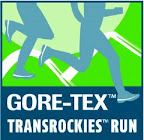 For those competing in the Gore-Tex TransRockies Run next week, the time for training is over. While strategy and perseverance will undoubtedly influence how individuals perform in this grueling 6-day stage race across the Colorado Rockies, the athletes’ ability to recover for subsequent stages will have a huge impact on performance. Below are some tips for aiding recovery during, immediately following, and in the days following a hard effort. The advice is tailored for the TransRockies Run, but is applicable during other stage races, after an ultra, or following any race or hard effort for that matter.
For those competing in the Gore-Tex TransRockies Run next week, the time for training is over. While strategy and perseverance will undoubtedly influence how individuals perform in this grueling 6-day stage race across the Colorado Rockies, the athletes’ ability to recover for subsequent stages will have a huge impact on performance. Below are some tips for aiding recovery during, immediately following, and in the days following a hard effort. The advice is tailored for the TransRockies Run, but is applicable during other stage races, after an ultra, or following any race or hard effort for that matter.
Recovery begins during the race.
- Hydration – Maintaining proper hydration and electrolyte levels during the race can minimize damage to your body.
- Fueling – Maximize your caloric intake during the race. Taking in some protein in the fuel mix can help minimize muscle catabolization.
- Run efficiently – If you run in a manner that minimizes muscle damage and stress on other soft tissue, your recovery period will be shorter. This is particularly important in a race with tons of downhill like the TransRockies Run.
After the race is over there’s even more one can do to aid in recovery
- Eat immediately after your run – Consuming a good bit of calories (mostly from carbs, some from protein) in the half hour or hour after a hard effort maximizes refueling of glycogen stores, your body’s quick energy source. For more info on refueling check out this article on post-workout recovery by First Endurance.
- Rehydrate – Keep rehydrating throughout the day after your hard effort is over. Competitors at the TransRockies Run will have to remember that in the dry, high mountain air they are sweating much more than they think.
- Cold water therapy – Soaking your legs in a cold mountain stream for one or more 15 minute periods during the day can greatly enhance recovery. When you don’t have a mountain stream handy, try an ice bath.
- Naps – Even relatively short naps have been shown to enhance recovery.
- Refuel – Take in adequate calories and protein to replenish your stores and repair your muscles. You may also consider taking a vitamin high in anti-oxidants to reduce free radical damage.
- Recovery clothing – A variety of manufacturer’s now make compression recovery clothing to aid recovery. I’ll be using recovery clothing next week, for sure. See iRunFar’s discussion of recovery clothing for more information.
- Tend to your wounds – Be they blisters, a bum achilles, or stomach problems, take care of any issues that could slow you down the next day while you’re not running.
- Elevate your legs – Elevating your legs for just 10 minutes can help your legs recover.
- Take it easy – Walking around a bit can be a good thing, but taking a walking tour of the Rockies should not be in order.
- Sleep – Get a good night’s rest. Avoid caffeine, alcohol, or whatever else may interfere with your sleep.
While not particularly applicable at a stage race like the TransRockies Run, there are a few things you can do in the days that follow a hard workout to aid in recovery.
- Active recovery – For the running folk, an easy 3-5 mile run can actually accelerate recovery more than taking a rest day. You can also cycle, swim, aqua jog, or engage in any light aerobic activity of your choosing for active recovery.
- Stretch – Light stretching following an active recovery session can help loosen things up. Just be sure not to do too much, too soon. It’s not unusual to be less flexible than normal in the days following a hard workout or race.
- Massage – Who doesn’t feel better after a good massage? Seek a good sport masseuse to get the proper type and intensity of massage.
